Martin Styner
Localizing Anomalies via Multiscale Score Matching Analysis
Jun 28, 2024


Abstract:Anomaly detection and localization in medical imaging remain critical challenges in healthcare. This paper introduces Spatial-MSMA (Multiscale Score Matching Analysis), a novel unsupervised method for anomaly localization in volumetric brain MRIs. Building upon the MSMA framework, our approach incorporates spatial information and conditional likelihoods to enhance anomaly detection capabilities. We employ a flexible normalizing flow model conditioned on patch positions and global image features to estimate patch-wise anomaly scores. The method is evaluated on a dataset of 1,650 T1- and T2-weighted brain MRIs from typically developing children, with simulated lesions added to the test set. Spatial-MSMA significantly outperforms existing methods, including reconstruction-based, generative-based, and interpretation-based approaches, in lesion detection and segmentation tasks. Our model achieves superior performance in both distance-based metrics (99th percentile Hausdorff Distance: $7.05 \pm 0.61$, Mean Surface Distance: $2.10 \pm 0.43$) and component-wise metrics (True Positive Rate: $0.83 \pm 0.01$, Positive Predictive Value: $0.96 \pm 0.01$). These results demonstrate Spatial-MSMA's potential for accurate and interpretable anomaly localization in medical imaging, with implications for improved diagnosis and treatment planning in clinical settings. Our code is available at~\url{https://github.com/ahsanMah/sade/}.
DeepGraphDMD: Interpretable Spatio-Temporal Decomposition of Non-linear Functional Brain Network Dynamics
Jun 05, 2023Abstract:Functional brain dynamics is supported by parallel and overlapping functional network modes that are associated with specific neural circuits. Decomposing these network modes from fMRI data and finding their temporal characteristics is challenging due to their time-varying nature and the non-linearity of the functional dynamics. Dynamic Mode Decomposition (DMD) algorithms have been quite popular for solving this decomposition problem in recent years. In this work, we apply GraphDMD -- an extension of the DMD for network data -- to extract the dynamic network modes and their temporal characteristics from the fMRI time series in an interpretable manner. GraphDMD, however, regards the underlying system as a linear dynamical system that is sub-optimal for extracting the network modes from non-linear functional data. In this work, we develop a generalized version of the GraphDMD algorithm -- DeepGraphDMD -- applicable to arbitrary non-linear graph dynamical systems. DeepGraphDMD is an autoencoder-based deep learning model that learns Koopman eigenfunctions for graph data and embeds the non-linear graph dynamics into a latent linear space. We show the effectiveness of our method in both simulated data and the HCP resting-state fMRI data. In the HCP data, DeepGraphDMD provides novel insights into cognitive brain functions by discovering two major network modes related to fluid and crystallized intelligence.
Anomaly Detection via Gumbel Noise Score Matching
Apr 06, 2023



Abstract:We propose Gumbel Noise Score Matching (GNSM), a novel unsupervised method to detect anomalies in categorical data. GNSM accomplishes this by estimating the scores, i.e. the gradients of log likelihoods w.r.t.~inputs, of continuously relaxed categorical distributions. We test our method on a suite of anomaly detection tabular datasets. GNSM achieves a consistently high performance across all experiments. We further demonstrate the flexibility of GNSM by applying it to image data where the model is tasked to detect poor segmentation predictions. Images ranked anomalous by GNSM show clear segmentation failures, with the outputs of GNSM strongly correlating with segmentation metrics computed on ground-truth. We outline the score matching training objective utilized by GNSM and provide an open-source implementation of our work.
Harmonization Benchmarking Tool for Neuroimaging Datasets
Nov 15, 2022



Abstract:A major data pre-processing step for large, multi-site studies is to handle site effects by harmonizing data, generating a dataset that enables more powerful analyses and more robust algorithms. There is a wide variety of data harmonization techniques, but there are few tools that streamline the process of harmonizing data, comparing across techniques, and benchmarking new techniques. In this paper, we introduce HArmonization BEnchmarking Tool (HABET), an open source tool for generating harmonized images and evaluating the performance of different harmonization algorithms. To demonstrate the capabilities of HABET, we harmonize diffusion MRI images from the Adolescent Brain and Cognitive Development (ABCD) study using two different approaches, and we compare their performance.
Optimal Transport Features for Morphometric Population Analysis
Aug 11, 2022
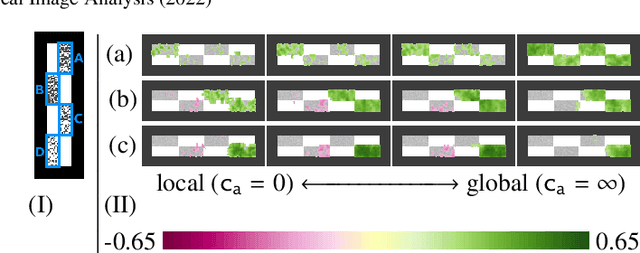
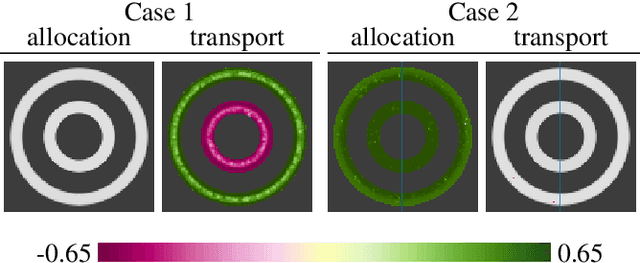
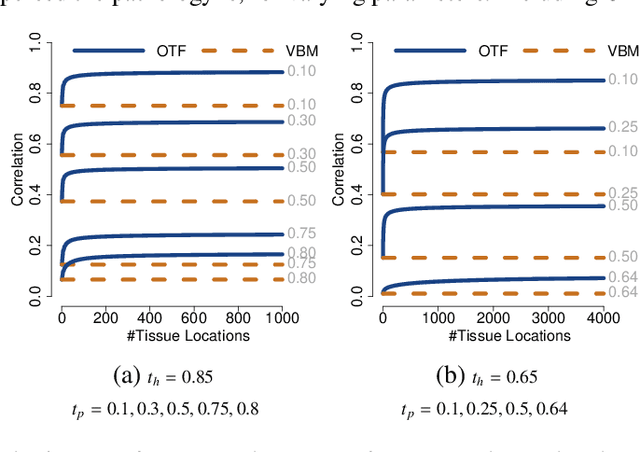
Abstract:Brain pathologies often manifest as partial or complete loss of tissue. The goal of many neuroimaging studies is to capture the location and amount of tissue changes with respect to a clinical variable of interest, such as disease progression. Morphometric analysis approaches capture local differences in the distribution of tissue or other quantities of interest in relation to a clinical variable. We propose to augment morphometric analysis with an additional feature extraction step based on unbalanced optimal transport. The optimal transport feature extraction step increases statistical power for pathologies that cause spatially dispersed tissue loss, minimizes sensitivity to shifts due to spatial misalignment or differences in brain topology, and separates changes due to volume differences from changes due to tissue location. We demonstrate the proposed optimal transport feature extraction step in the context of a volumetric morphometric analysis of the OASIS-1 study for Alzheimer's disease. The results demonstrate that the proposed approach can identify tissue changes and differences that are not otherwise measurable.
Multi-view Attention for gestational age at birth prediction
Jul 08, 2022
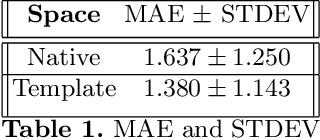


Abstract:We present our method for gestational age at birth prediction for the SLCN (surface learning for clinical neuroimaging) challenge. Our method is based on a multi-view shape analysis technique that captures 2D renderings of a 3D object from different viewpoints. We render the brain features on the surface of the sphere and then the 2D images are analyzed via 2D CNNs and an attention layer for the regression task. The regression task achieves a MAE of 1.637 +- 1.3 on the Native space and MAE of 1.38 +- 1.14 on the template space. The source code for this project is available in our github repository https://github.com/MathieuLeclercq/SLCN_challenge_UNC
Non-Euclidean Analysis of Joint Variations in Multi-Object Shapes
Sep 07, 2021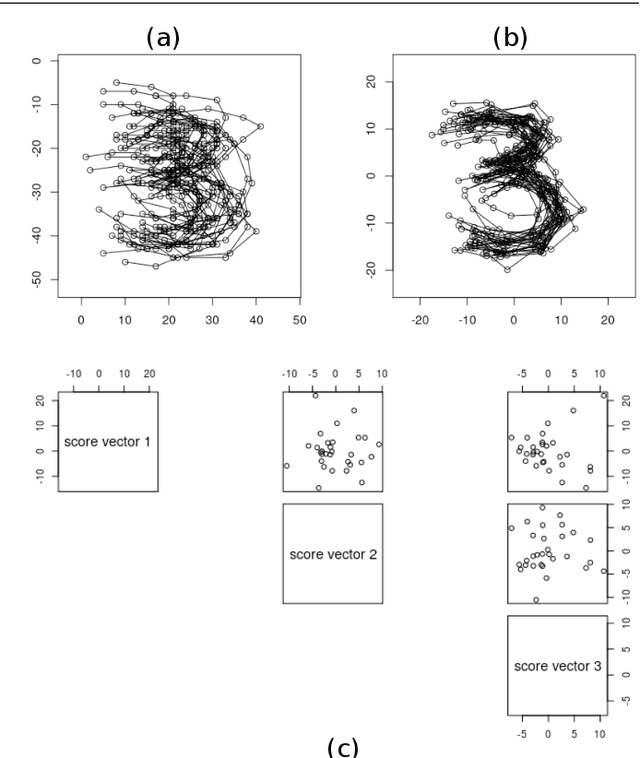

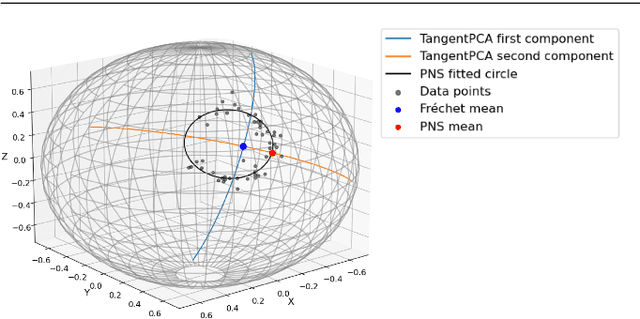
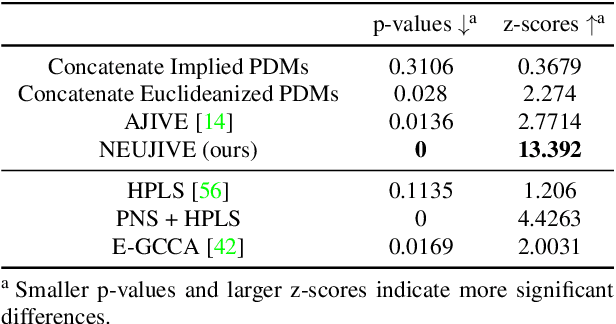
Abstract:This paper considers joint analysis of multiple functionally related structures in classification tasks. In particular, our method developed is driven by how functionally correlated brain structures vary together between autism and control groups. To do so, we devised a method based on a novel combination of (1) non-Euclidean statistics that can faithfully represent non-Euclidean data in Euclidean spaces and (2) a non-parametric integrative analysis method that can decompose multi-block Euclidean data into joint, individual, and residual structures. We find that the resulting joint structure is effective, robust, and interpretable in recognizing the underlying patterns of the joint variation of multi-block non-Euclidean data. We verified the method in classifying the structural shape data collected from cases that developed and did not develop into Autistic Spectrum Disorder (ASD).
Multiscale Score Matching for Out-of-Distribution Detection
Oct 27, 2020



Abstract:We present a new methodology for detecting out-of-distribution (OOD) images by utilizing norms of the score estimates at multiple noise scales. A score is defined to be the gradient of the log density with respect to the input data. Our methodology is completely unsupervised and follows a straight forward training scheme. First, we train a deep network to estimate scores for levels of noise. Once trained, we calculate the noisy score estimates for N in-distribution samples and take the L2-norms across the input dimensions (resulting in an NxL matrix). Then we train an auxiliary model (such as a Gaussian Mixture Model) to learn the in-distribution spatial regions in this L-dimensional space. This auxiliary model can now be used to identify points that reside outside the learned space. Despite its simplicity, our experiments show that this methodology significantly outperforms the state-of-the-art in detecting out-of-distribution images. For example, our method can effectively separate CIFAR-10 (inlier) and SVHN (OOD) images, a setting which has been previously shown to be difficult for deep likelihood models.
Accurate Automatic Segmentation of Amygdala Subnuclei and Modeling of Uncertainty via Bayesian Fully Convolutional Neural Network
Feb 19, 2019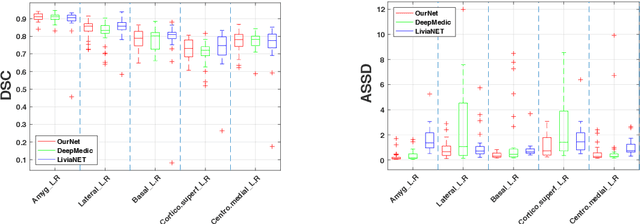
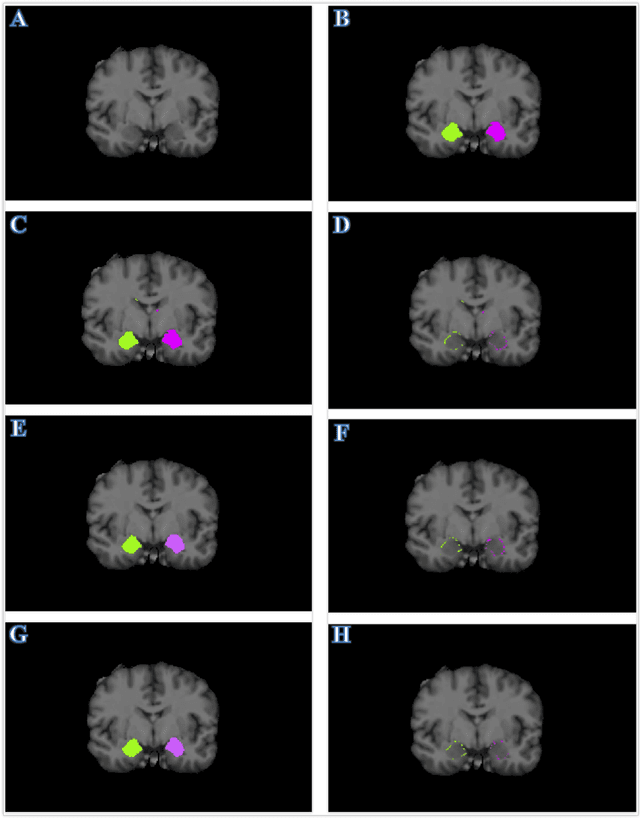
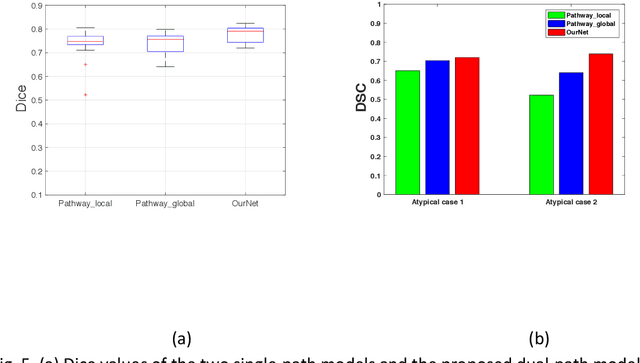
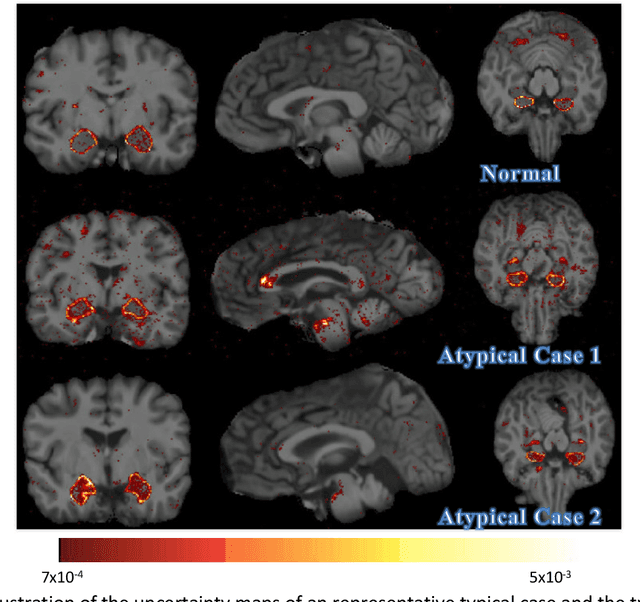
Abstract:Recent advances in deep learning have improved the segmentation accuracy of subcortical brain structures, which would be useful in neuroimaging studies of many neurological disorders. However, most of the previous deep learning work does not investigate the specific difficulties that exist in segmenting extremely small but important brain regions such as the amygdala and its subregions. To tackle this challenging task, a novel 3D Bayesian fully convolutional neural network was developed to apply a dilated dualpathway approach that retains fine details and utilizes both local and more global contextual information to automatically segment the amygdala and its subregions at high precision. The proposed method provides insights on network design and sampling strategy that target segmentations of small 3D structures. In particular, this study confirms that a large context, enabled by a large field of view, is beneficial for segmenting small objects; furthermore, precise contextual information enabled by dilated convolutions allows for better boundary localization, which is critical for examining the morphology of the structure. In addition, it is demonstrated that the uncertainty information estimated from our network may be leveraged to identify atypicality in data. Our method was compared with two state-of-the-art deep learning models and a traditional multi-atlas approach, and exhibited excellent performance as measured both by Dice overlap as well as average symmetric surface distance. To the best of our knowledge, this work is the first deep learning-based approach that targets the subregions of the amygdala.
Quicksilver: Fast Predictive Image Registration - a Deep Learning Approach
Jul 19, 2017



Abstract:This paper introduces Quicksilver, a fast deformable image registration method. Quicksilver registration for image-pairs works by patch-wise prediction of a deformation model based directly on image appearance. A deep encoder-decoder network is used as the prediction model. While the prediction strategy is general, we focus on predictions for the Large Deformation Diffeomorphic Metric Mapping (LDDMM) model. Specifically, we predict the momentum-parameterization of LDDMM, which facilitates a patch-wise prediction strategy while maintaining the theoretical properties of LDDMM, such as guaranteed diffeomorphic mappings for sufficiently strong regularization. We also provide a probabilistic version of our prediction network which can be sampled during the testing time to calculate uncertainties in the predicted deformations. Finally, we introduce a new correction network which greatly increases the prediction accuracy of an already existing prediction network. We show experimental results for uni-modal atlas-to-image as well as uni- / multi- modal image-to-image registrations. These experiments demonstrate that our method accurately predicts registrations obtained by numerical optimization, is very fast, achieves state-of-the-art registration results on four standard validation datasets, and can jointly learn an image similarity measure. Quicksilver is freely available as an open-source software.
 Add to Chrome
Add to Chrome Add to Firefox
Add to Firefox Add to Edge
Add to Edge